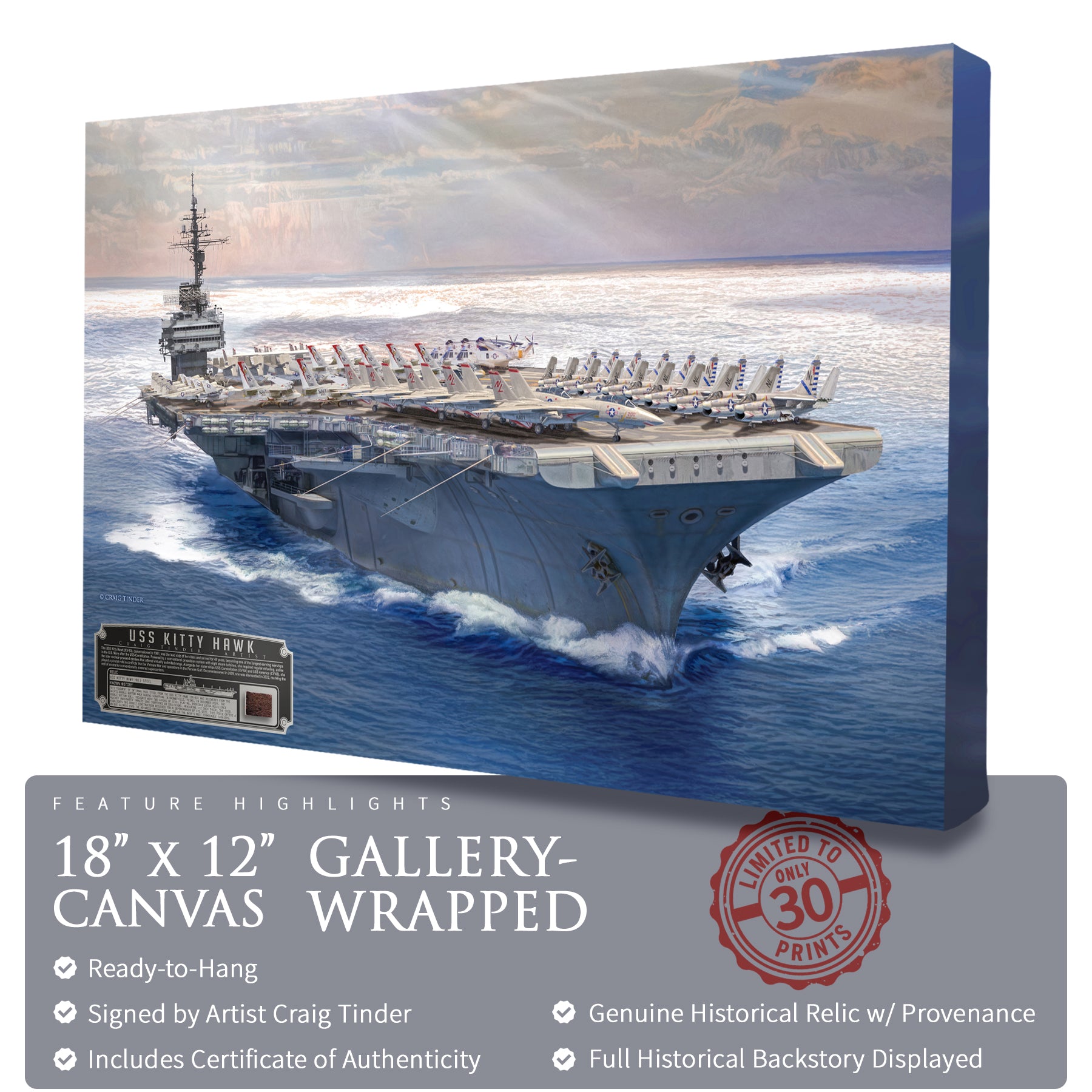
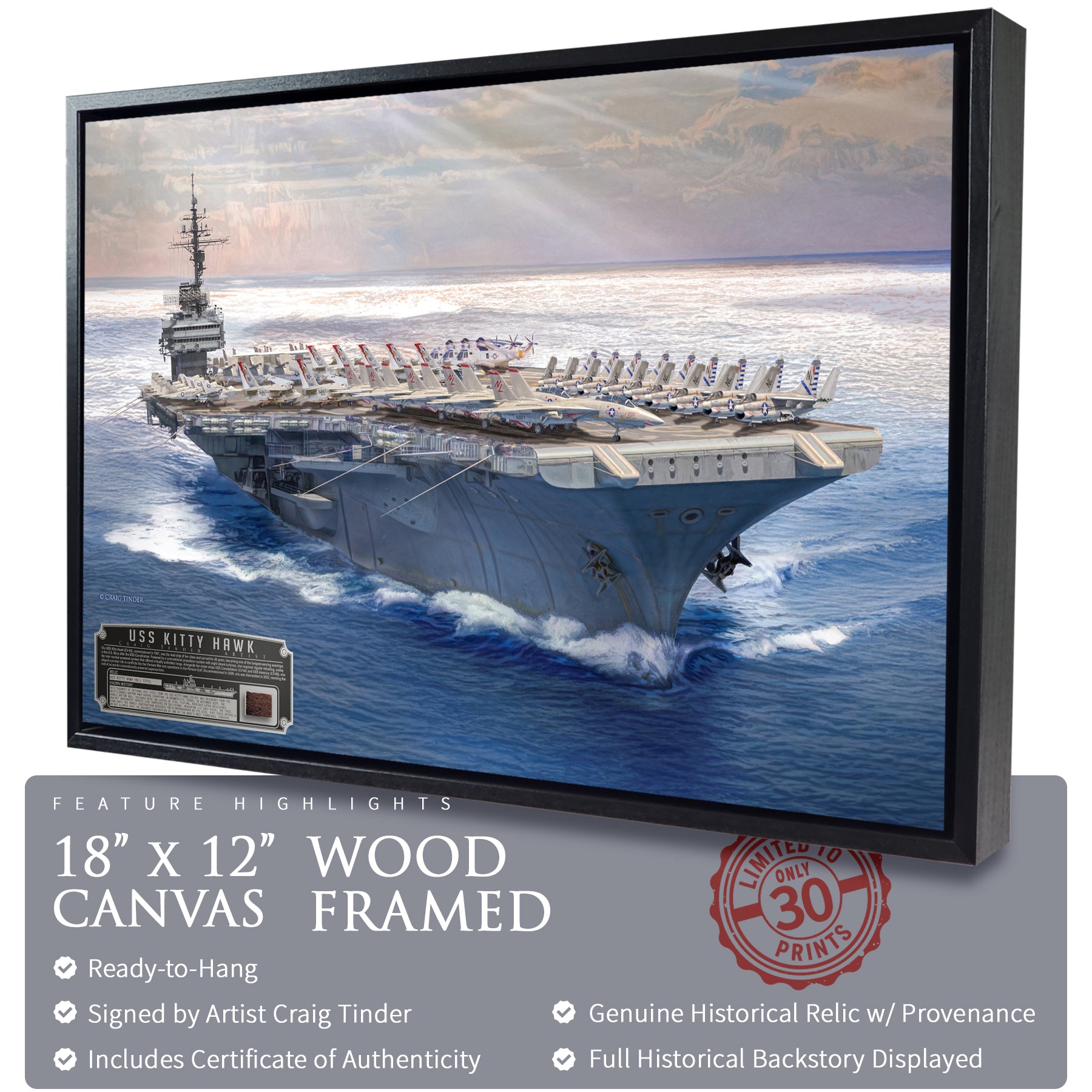
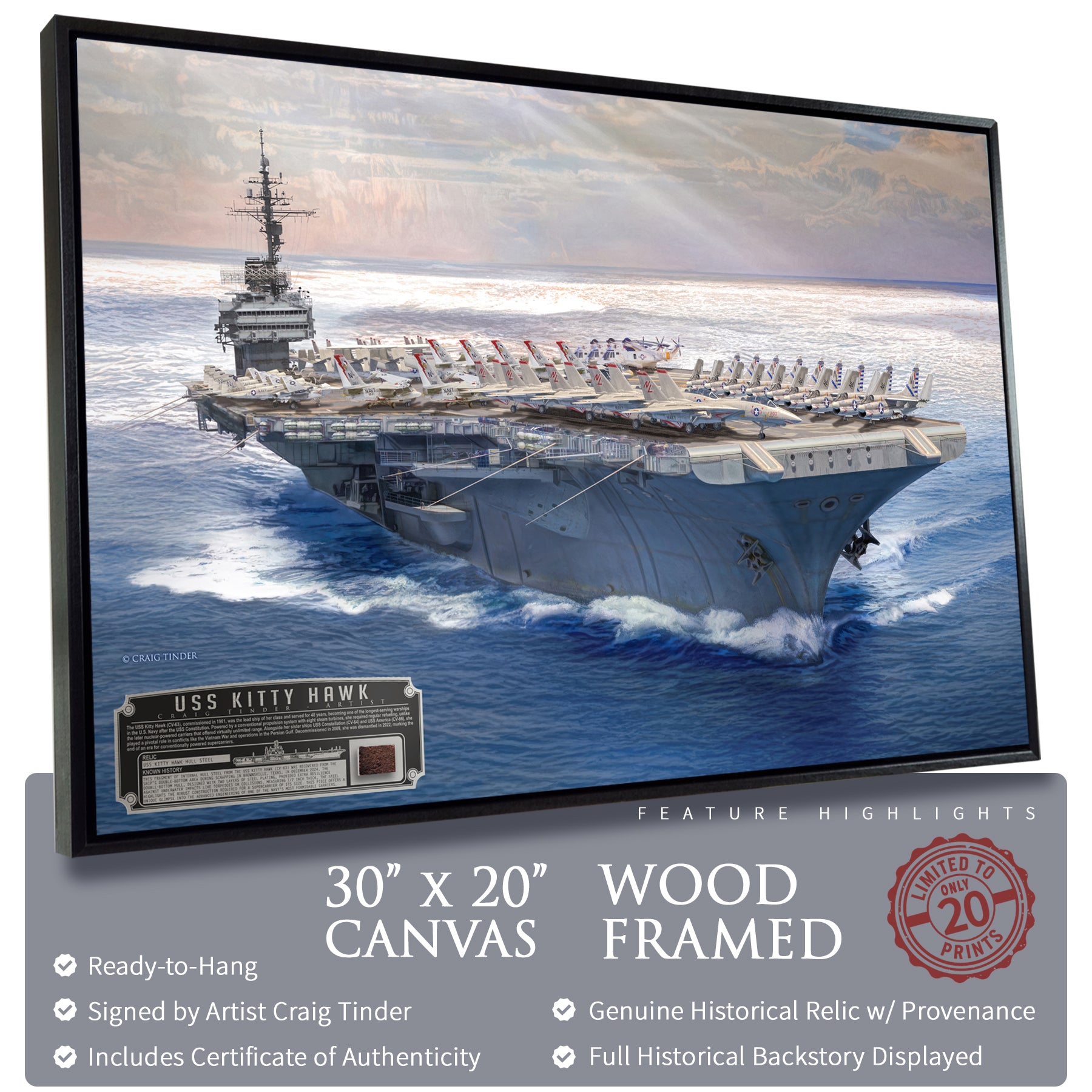
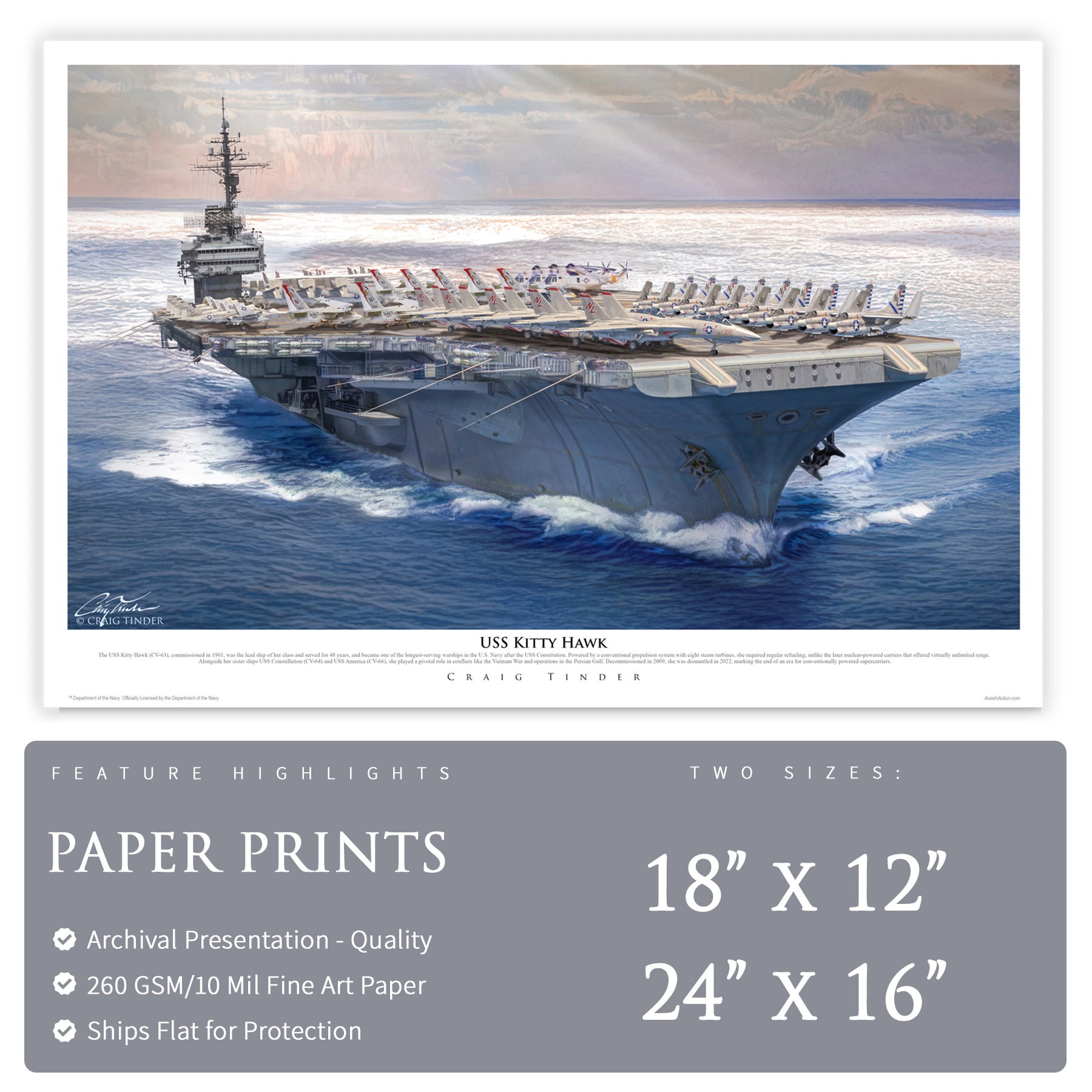
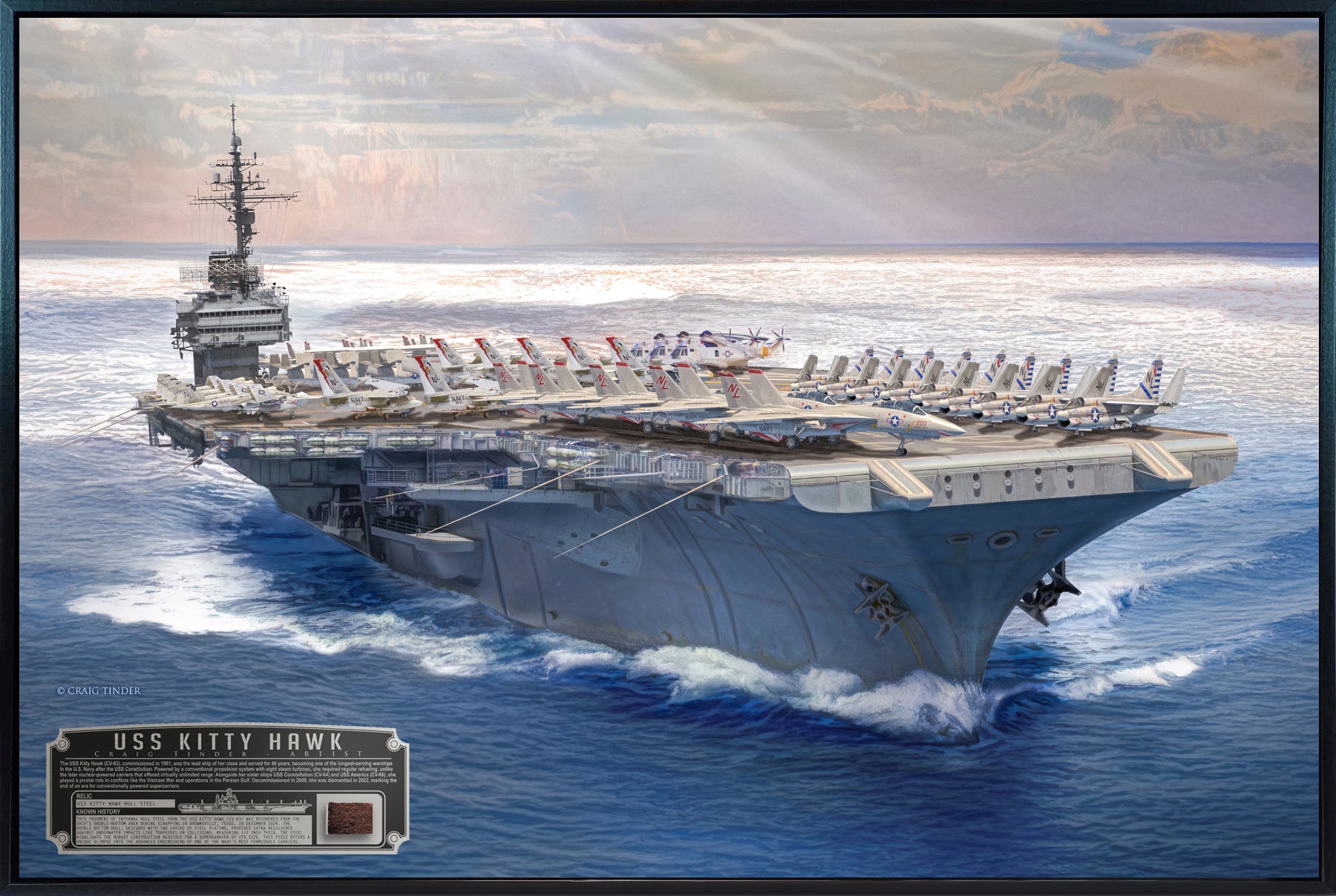
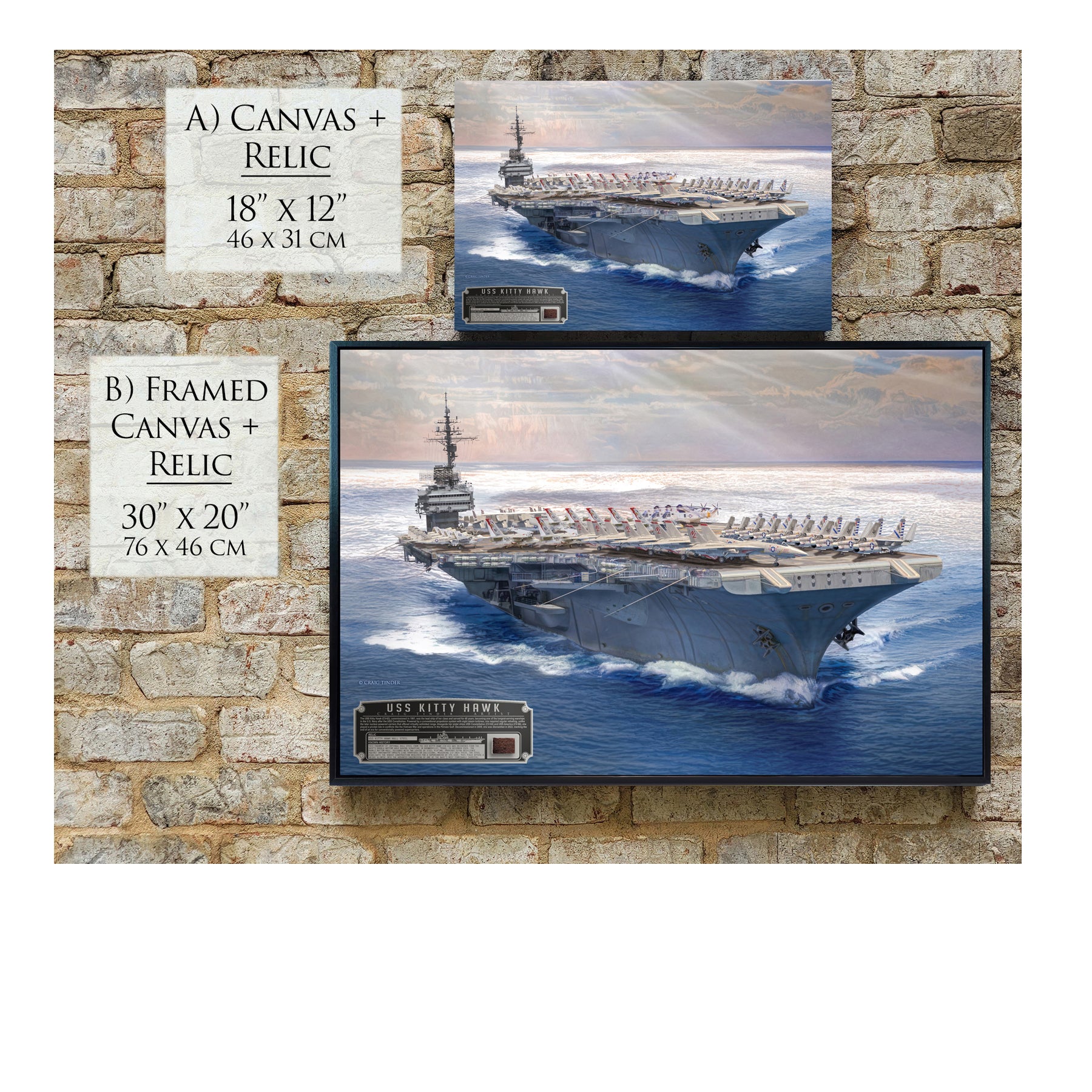
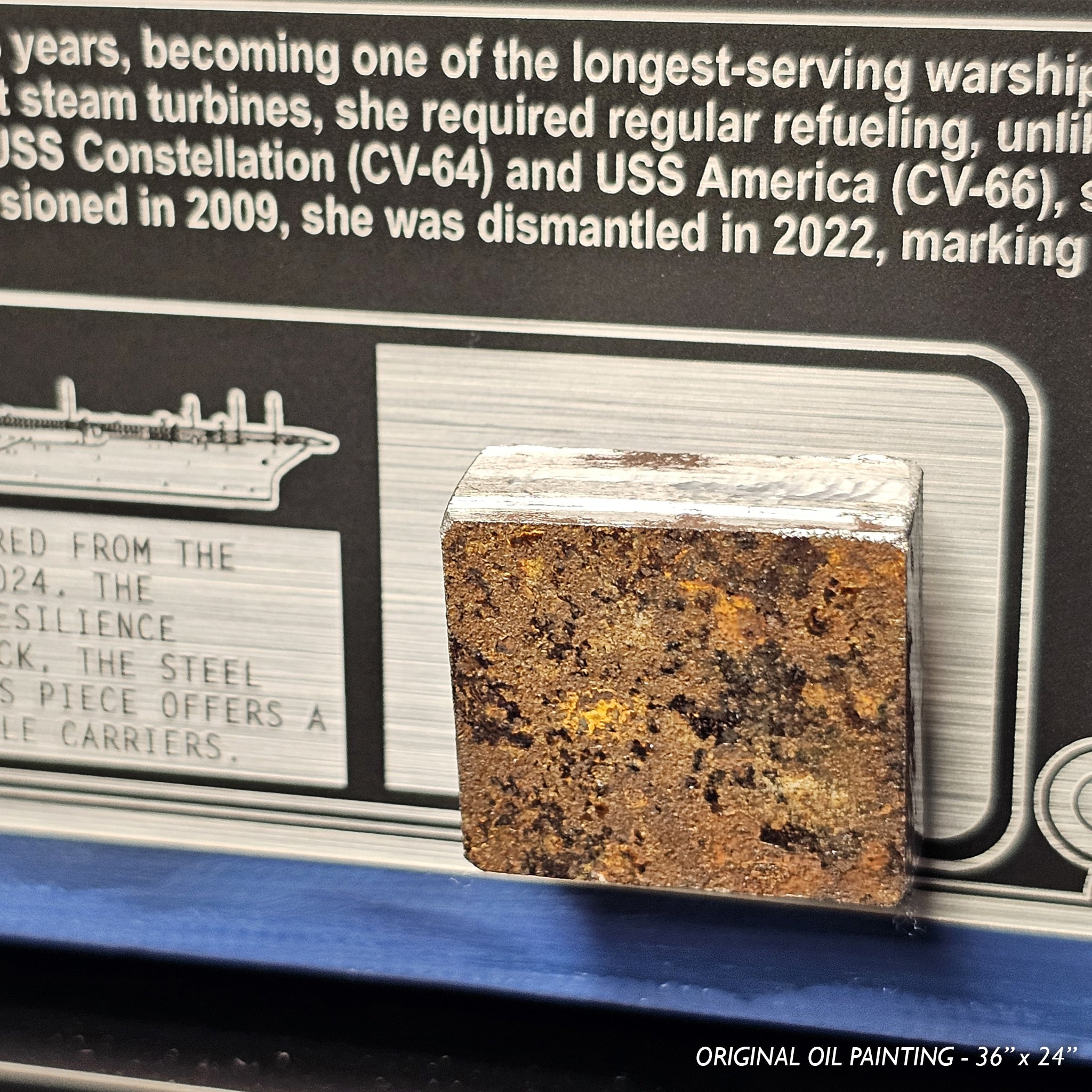
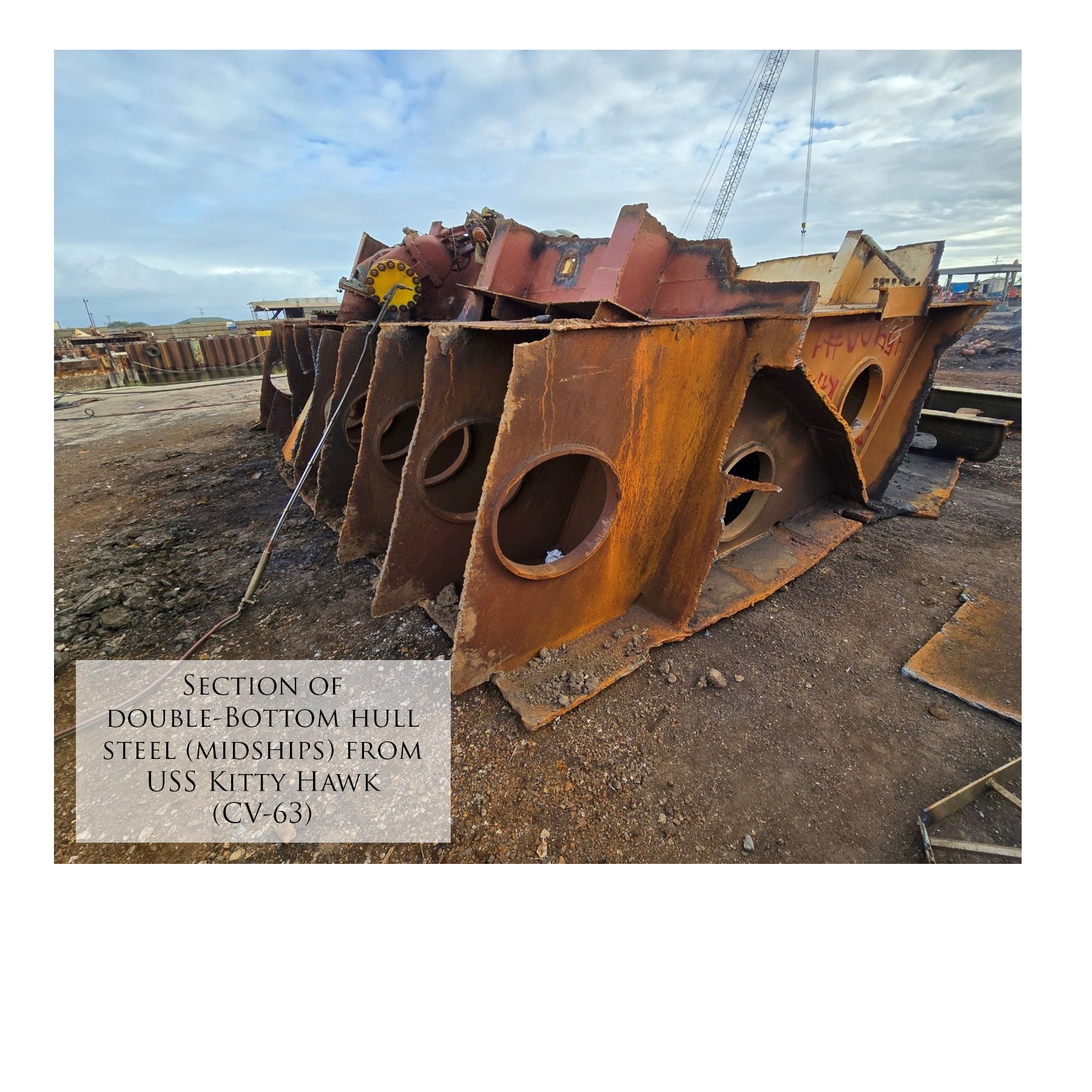
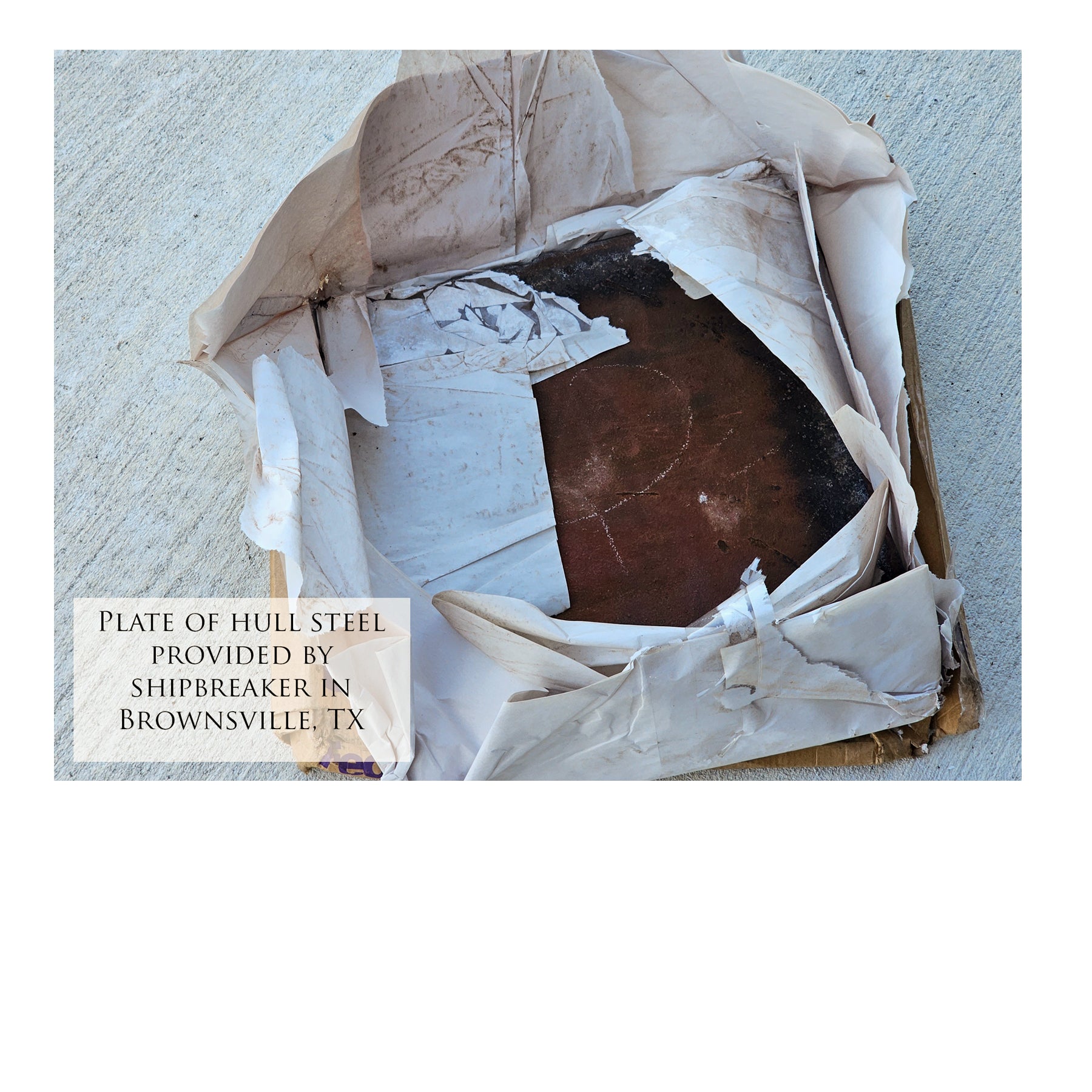
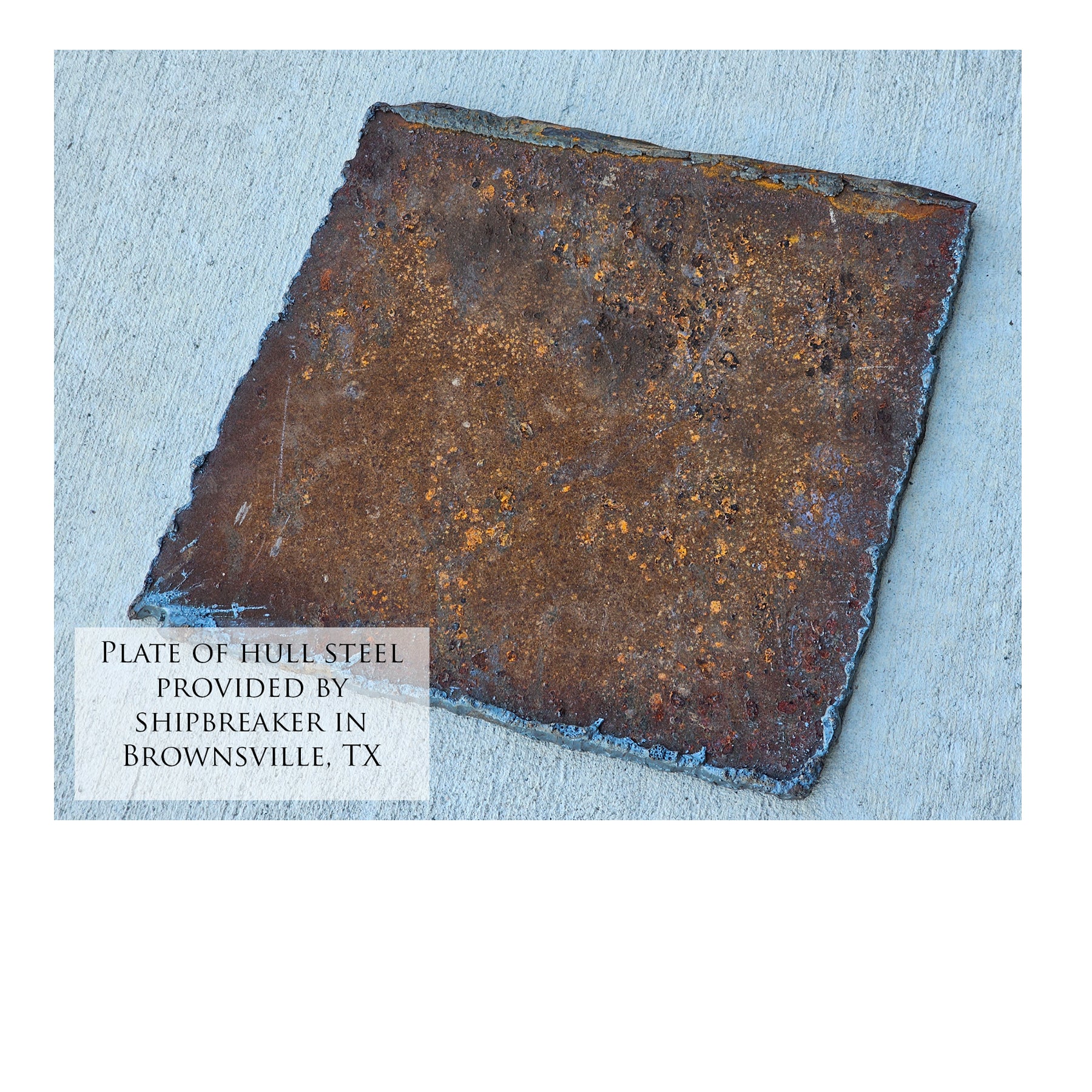
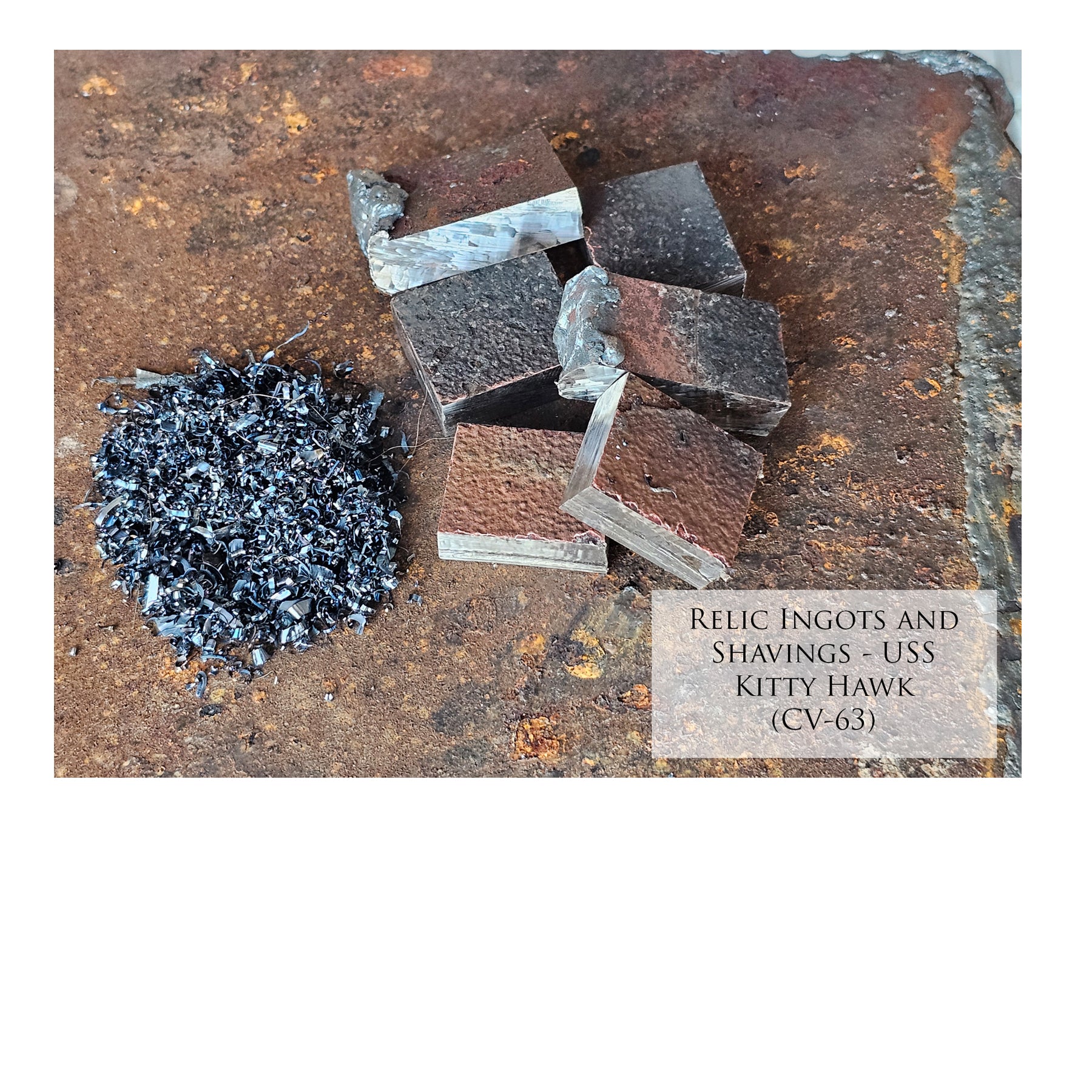


USS Kitty Hawk CV-63 Canvas with Relic | Includes Hull Steel from CV-63

USS Kitty Hawk CV-63 Canvas with Relic | Includes Hull Steel from CV-63
If you have any questions, you are always welcome to contact us. We'll get back to you as soon as possible, within 24 hours on weekdays.
Shipping Information
Use this text to answer questions in as much detail as possible for your customers.
Customer Support
Use this text to answer questions in as much detail as possible for your customers.
FAQ’s
Use this text to answer questions in as much detail as possible for your customers.
Contact Us
Use this text to answer questions in as much detail as possible for your customers.
Description
About the Relic & Process
This fragment of internal hull steel from the USS Kitty Hawk (CV-63) represents a unique piece of naval history. Recovered from the aft, central section of the ship's double-bottom area, this specific piece was provided to Aces In Action by the ship-breaking contractor responsible for scrapping the USS Kitty Hawk in Brownsville, Texas. Measuring 1/2 inch thick, the steel was removed in December 2024, offering a tangible connection to one of the most significant aircraft carriers in U.S. Navy history.
Section of Double Bottom Hull Steel (amidship) of the USS Kitty Hawk (CV-63) being dismantled in Brownsville, Texas
The Kitty Hawk was designed with a double-bottom hull, a critical feature for large naval vessels such as aircraft carriers. A double-bottom hull consists of two layers of steel plating on the bottom of the ship, separated by a narrow space that enhances the vessel's structural integrity and resilience. This design was particularly important for warships like the Kitty Hawk, as it provided an additional layer of protection against underwater threats such as torpedoes, mines, and accidental collisions. While the outer steel layer served as the primary defense against external impacts, the inner layer added a secondary barrier, reducing the risk of breaches that could compromise buoyancy or internal compartments.
Plate of Hull Steel from the USS Kitty Hawk CV-63
This engineering approach not only improved the survivability of the ship but also allowed for safer storage of fuel, ballast, and other critical materials within the space between the two layers. In combat scenarios, the double-bottom hull design was a key feature that contributed to the ship's ability to sustain damage while continuing to operate effectively. Despite the extra protection it offered, the hull maintained a single, solid outer structure to ensure hydrodynamic efficiency, a critical factor for a vessel as large and mission-critical as an aircraft carrier.
Close-up of torch cut marks in removal of the relic
The USS Kitty Hawk served the U.S. Navy for nearly 50 years, and her double-bottom hull was a testament to the innovative naval engineering of the era. This fragment not only embodies the strength and durability of the ship but also highlights the advancements in shipbuilding that made aircraft carriers such as the Kitty Hawk vital assets in projecting naval power across the globe.
This art piece is an officially licensed product of the U.S. Department of the Navy.
Plate of Hull Steel of USS Kitty Hawk CV-63
Plate of Hull Steel of USS Kitty Hawk CV-63
Relic Ingots and Steel Metal Shavings of the USS Kitty Hawk (CV-63)
Disclaimer
By purchasing from Aces In Action, you acknowledge that the product may vary slightly from the images on our website. We use authentic materials from military vehicles and relics, which may contain potentially hazardous substances. These items are not intended for ingestion, inhalation, or use by children. Aces In Action is an independent company, unaffiliated with or endorsed by any other organization. All names, logos, and trademarks are the property of their respective owners and are used for identification only, in accordance with the Lanham Act. Their use does not imply any official endorsement.






